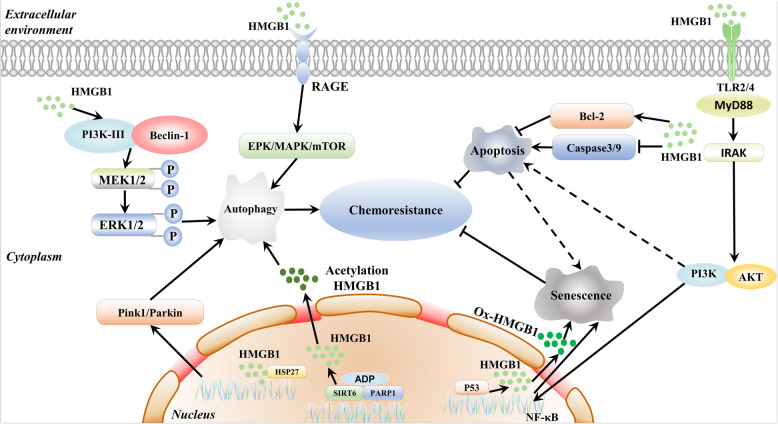Fig. 4.
The dual role of HMGB1 in chemoresistance. HMGB1-dependent autophagy promotes chemoresistance in three ways: nuclear HMGB1 upregulates the expression of HSP27, cytoplasmic HMGB1 activates the Beclin-1/PI3K-III complex, and extracellular HMGB1 binds to RAGE. Chemotherapy also activates SIRT6/PARP1 and promotes HMGB1 acetylation and translocation, inducing autophagy. HMGB1 inhibits apoptosis to enhance chemoresistance by inhibiting the caspase3/9 pathway and inducing Bcl-2 release. In contrast, HMGB1 induces tumor cell senescence to improve chemotherapy. HMGB1 binds to TLR2/4 and then activates the NF-κB signaling pathway, inducing p53-dependent cellular senescence. HMGB1 can also induce apoptosis-to-senescence in tumor cells

